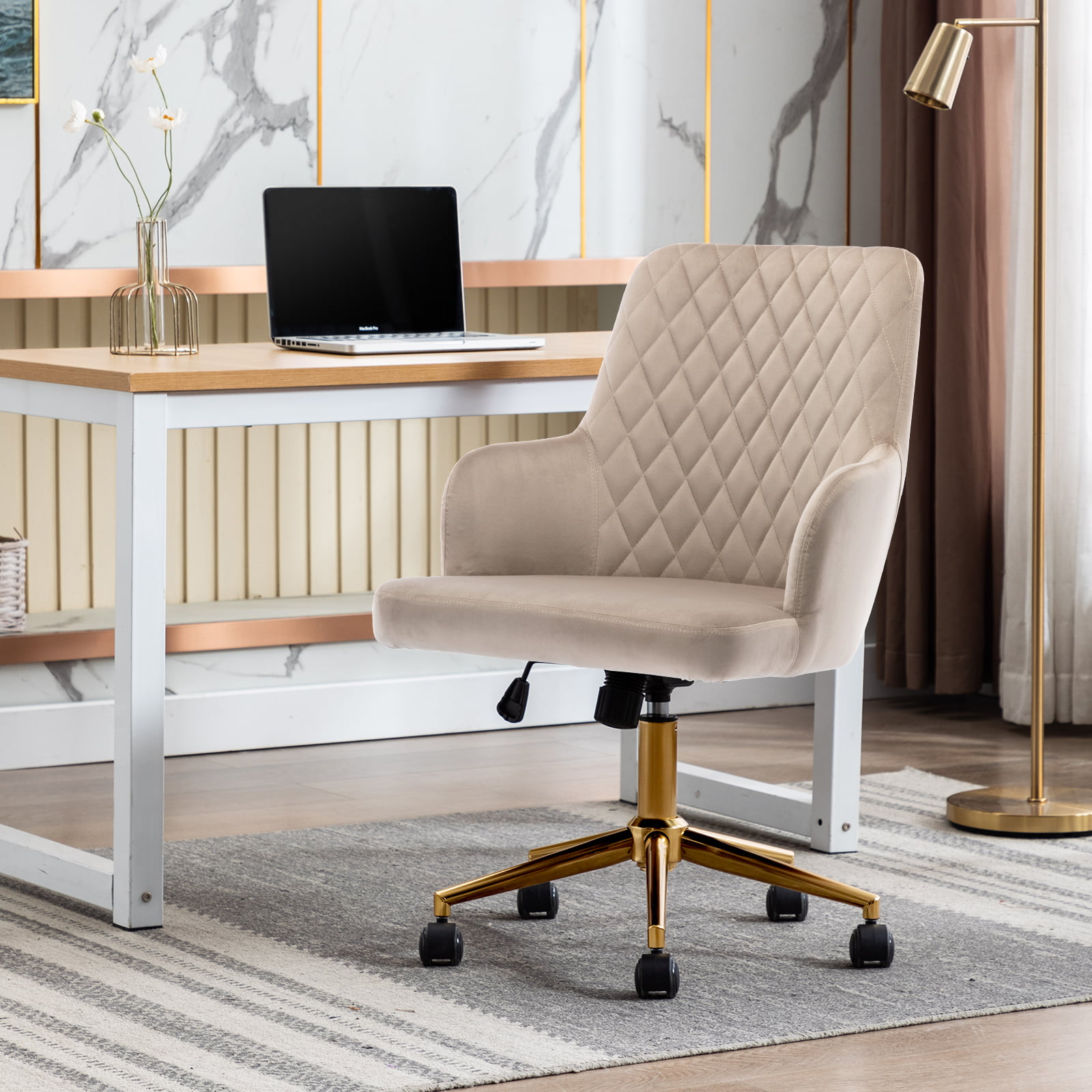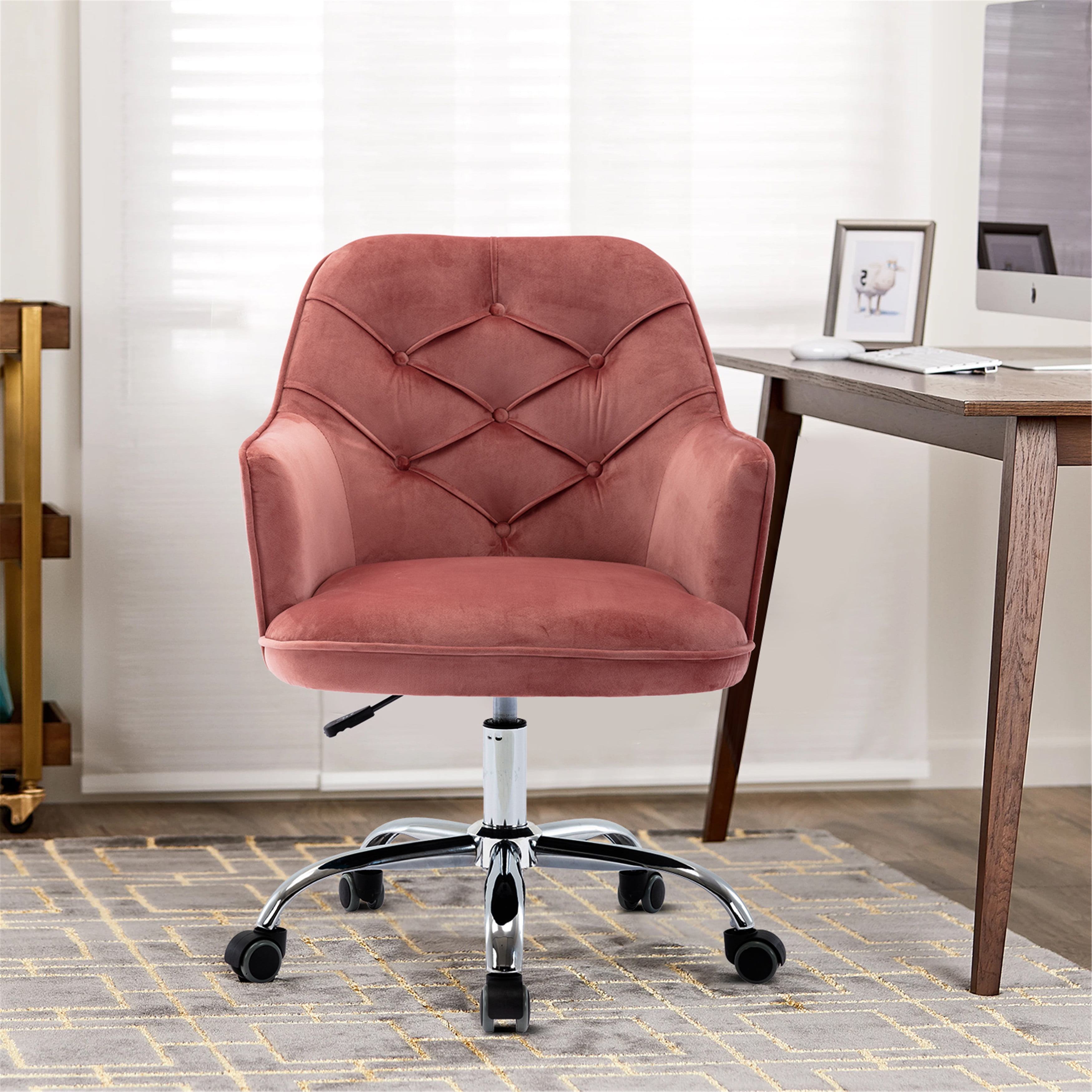Design & Aesthetics of Modern Velvet Desk Chairs

The resurgence of velvet in interior design has undeniably impacted furniture, particularly desk chairs. The luxurious texture and rich color options make velvet desk chairs a stylish and comfortable addition to any workspace, offering a blend of sophistication and modern appeal. This section explores the diverse design aspects of these chairs, from color palettes and textures to varying design styles.
Color and Texture Variety in Modern Velvet Desk Chairs
Velvet desk chairs are available in a wide spectrum of colors and textures, catering to diverse tastes and interior design schemes. The following table showcases a small sample of the options available from various manufacturers:
| Manufacturer | Color | Texture | Price Range |
|---|---|---|---|
| West Elm | Emerald Green | Smooth Velvet | $300 – $500 |
| CB2 | Dusty Rose | Crushed Velvet | $250 – $400 |
| Article | Navy Blue | Smooth Velvet | $200 – $350 |
| IKEA | Charcoal Grey | Textured Velvet | $150 – $250 |
Design Styles of Modern Velvet Desk Chairs
Modern velvet desk chairs encompass a variety of design styles, reflecting contemporary trends and classic aesthetics.
- Mid-Century Modern: These chairs often feature clean lines, tapered legs, and a simple, elegant silhouette. Think gently curved backs and a focus on functionality and understated sophistication. Velvet upholstery adds a touch of unexpected luxury to this otherwise minimalist style.
- Minimalist: Minimalist velvet desk chairs prioritize simplicity and functionality. They typically feature a streamlined design with minimal ornamentation, focusing on clean lines and a neutral color palette. The velvet upholstery provides a subtle textural contrast against the chair’s overall simplicity.
- Traditional: Traditional-style velvet desk chairs incorporate classic design elements, such as ornate detailing, button tufting, and high backs. The rich texture of the velvet complements the chair’s opulent aesthetic, creating a sense of timeless elegance. These often incorporate more substantial framing and richer color choices.
Impact of Different Velvet Textures on Aesthetic
The texture of the velvet significantly impacts the overall aesthetic of a desk chair.
- Crushed Velvet: Crushed velvet possesses a uniquely textured surface with a slightly rumpled appearance. This adds visual interest and a touch of bohemian flair, softening the chair’s lines and giving it a more relaxed, informal feel. It’s a popular choice for creating a cozy and inviting atmosphere.
- Smooth Velvet: Smooth velvet boasts a luxurious, polished finish. Its sleek surface reflects light beautifully, adding a touch of glamour and sophistication to the chair. This texture exudes elegance and is well-suited for more formal or minimalist settings.
Modern Velvet Desk Chair Design Concepts
Three distinct modern velvet desk chair concepts illustrate the versatility of this material:
- Concept 1: The “Scandi-Velvet”: A minimalist design with a light oak frame and a pale grey smooth velvet seat and back. Clean lines, tapered legs, and a subtle, sophisticated aesthetic define this chair, perfect for a contemporary Scandinavian-inspired workspace. The pale grey adds a calming effect, while the smooth velvet offers a touch of luxury without overwhelming the minimalist design.
- Concept 2: The “Emerald Jewel”: A mid-century modern design with a dark walnut wood frame and a deep emerald green crushed velvet upholstery. Gently curved lines and button tufting add a touch of classic elegance. This chair makes a statement with its rich color and luxurious texture, perfect for adding a pop of color and sophistication to a home office.
- Concept 3: The “Urban Chic”: A sleek, modern design with a black metal frame and a charcoal grey textured velvet upholstery. The chair features a high back for added support and a slightly angled seat for ergonomic comfort. This chair’s industrial-chic aesthetic is enhanced by the textured velvet, creating a sophisticated and contemporary look suitable for a modern city apartment.
Manufacturing, Materials, and Sustainability of Modern Velvet Desk Chairs

The creation of a modern velvet desk chair is a multifaceted process, involving skilled craftsmanship and careful consideration of materials. From sourcing raw materials to the final assembly, each step contributes to the chair’s overall quality, durability, and environmental impact. Understanding these aspects is crucial for appreciating the complexities involved in producing these stylish and functional pieces of furniture.
Manufacturing Processes, Modern velvet desk chair
The manufacturing process typically begins with the sourcing of raw materials. This includes selecting high-quality wood for the frame (often hardwoods like oak or beech, known for their strength and durability), metal components for structural support or accents (steel or aluminum are common choices), and, of course, the velvet fabric itself. The wood is often cut, shaped, and sanded using computer-aided design (CAD) and CNC machinery for precision and efficiency. Metal parts undergo similar processes, including cutting, bending, and welding. The fabric is inspected for quality and consistency before being cut and sewn to create the chair’s upholstery. Finally, the various components are assembled, often using a combination of manual labor and automated processes. Quality control checks are implemented at each stage to ensure the final product meets the required standards. Some manufacturers employ techniques like ergonomic design software to optimize comfort and support.
Material Durability and Longevity
The choice of materials significantly impacts the chair’s durability and longevity. Different materials offer varying levels of resistance to wear and tear.
- Wood Frames: Hardwood frames, especially those properly treated and finished, offer exceptional durability and longevity. They can withstand significant weight and use, lasting for decades with proper care. Oak, for instance, is renowned for its strength and resistance to damage.
- Metal Frames: Metal frames, such as those made from steel or aluminum, provide robust support and are resistant to warping or cracking. However, they can be susceptible to rust or corrosion if not properly treated, particularly in humid environments. Powder-coated finishes help enhance their durability and longevity.
- Plastic Components: Plastic components, while often more affordable, generally have a shorter lifespan compared to wood or metal. They can be prone to cracking, breaking, or fading over time, especially with prolonged exposure to sunlight or extreme temperatures. The quality of the plastic itself plays a vital role in its longevity.
Velvet Fabric Types and Sustainability
Velvet fabrics used in modern desk chairs come in a variety of materials, each with its own sustainability implications.
- Cotton Velvet: A natural fiber, cotton velvet is generally considered more sustainable than synthetic options. However, the production of cotton can be resource-intensive, requiring significant amounts of water and pesticides. Organically grown cotton is a more sustainable alternative.
- Polyester Velvet: Polyester is a synthetic fiber derived from petroleum, a non-renewable resource. Its production contributes to greenhouse gas emissions. While durable and easy to clean, polyester velvet’s sustainability is a concern. Recycled polyester is a more environmentally friendly option.
- Velvet Blends: Many velvet fabrics are blends of natural and synthetic fibers, aiming to combine the desirable properties of both. These blends can offer a balance between sustainability and performance, but their overall environmental impact depends on the specific composition and manufacturing processes.
